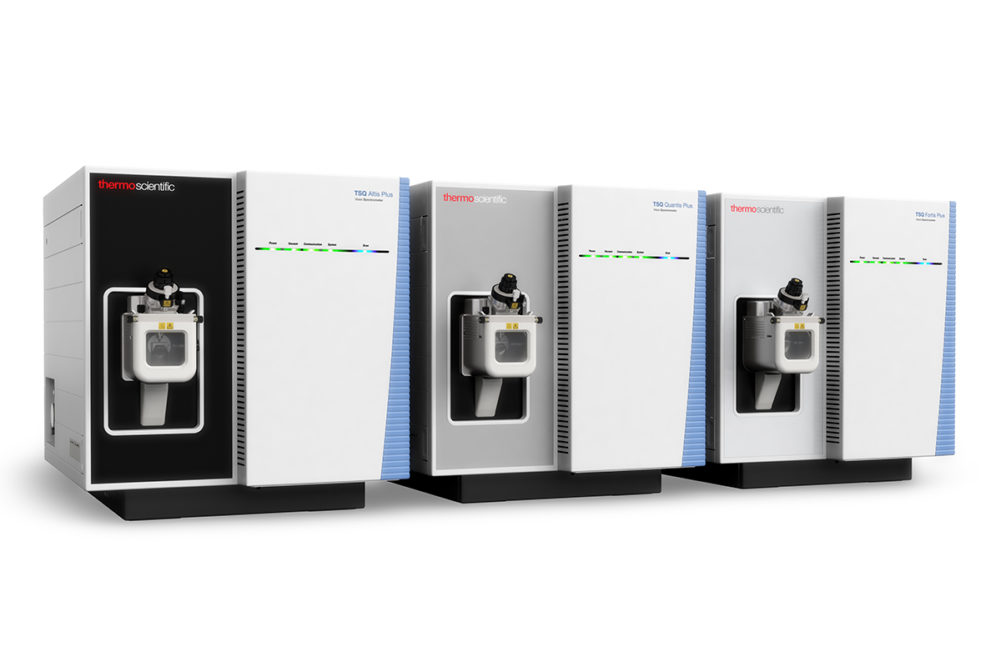SAN JOSE, CALIF. and GERMERING, GERMANY — Thermo Fisher Scientific, a technology and service provider offering food safety solutions to pet food and treat processors and product testing facilities, launched two new analytics tools on Sept. 8 to help laboratories fine-tune their results.
The company announced its new mass spectrometry (MS) portfolio optimized to meet needs for higher throughput and improved sensitivity. The Thermo Scientific TSQ Plus triple quadrupole MS portfolio now offers increased workflow throughput, low-mass product ion transmission efficiency and ease of use. Improvements include enhanced data acquisition and polarity switching speeds, sensitivity improvements, mass calibration and method optimization, chromatography and data processing software.
The portfolio includes the TSQ Altis Plus, TSQ Quantis Plus and TSQ Fortis Plus MS.
"Laboratories performing routine quantitative experiments continue to need to identify new compounds of interest across industries, such as pharma, food and environmental, resulting in rapidly changing regulations and lower detection limits," said August Specht, vice president of research and development for chromatography and mass spectrometry at Thermo Fisher. "In order to protect consumer and environmental health, laboratories need to provide comprehensive workflows to address evolving requirements, and the TSQ Plus triple quadrupole MS portfolio has been designed to deliver."
Laboratories will benefit from increased uptime, simplified transfers, integration with the mzCloud database for Selective Reaction Monitoring (SRM), and industry-leading liquid- and ion-chromatography systems and support software solutions.
"The TSQ Altis Plus platform is a step forward toward omics-scale, quantitative MS-based methodology for in-depth investigation of metabolism,” added Julijana Ivanisevic, professor at the University of Lausanne in Switzerland. “The unprecedented acquisition speed of the TSQ Altis Plus allows us to maximize the metabolome coverage and significantly enhances the peak definition, essential for accurate quantification. The TSQ Altis Plus mass spectrometer allows for robust quantification of low abundant species, thus complementing the comprehensiveness of measured metabolite signature. This increase in productivity, along with the quantitative aspect, is crucial for metabolic phenotyping of human populations – a prerequisite for the transfer to clinical settings."
 Thermo Scientific Vanquish Neo UHPLC System
Thermo Scientific Vanquish Neo UHPLC System
"Low-flow LC users are limited by technical capacity and a high level of expertise required for system operation," said Kent Davidson, vice president and general manager of high performance chromatography solutions at Thermo Fisher Scientific. "The Vanquish Neo UHPLC System and PepMap Neo Columns allow for long-term operation at maximum performance levels without compromise. Enhanced ease-of-use and increased versatility enable users to push science forward."
The new Vanquish Neo UHPLC System and PepMap Neo Columns offer superior separation performance, reproducibility across columns, and simplified operation. High-injection volume linearity, precision and accuracy allow for improved quantitation, and automated wash routines result in negligible system carryover. Additionally, the system can be monitored and controlled automatically and through guided maintenance routines.
"The Vanquish Neo UHPLC System will transform how scientists perform proteomics studies by providing the long-term robustness and flow-range versatility required for deep and fast LC-MS profiling of thousands of proteomes, while coupled with PepMap Columns and high-resolution accurate mass (HRAM) systems,” said Bernhard Kuster, professor at Technical University Munich.
Read more about pet food safety on our Operations page.




